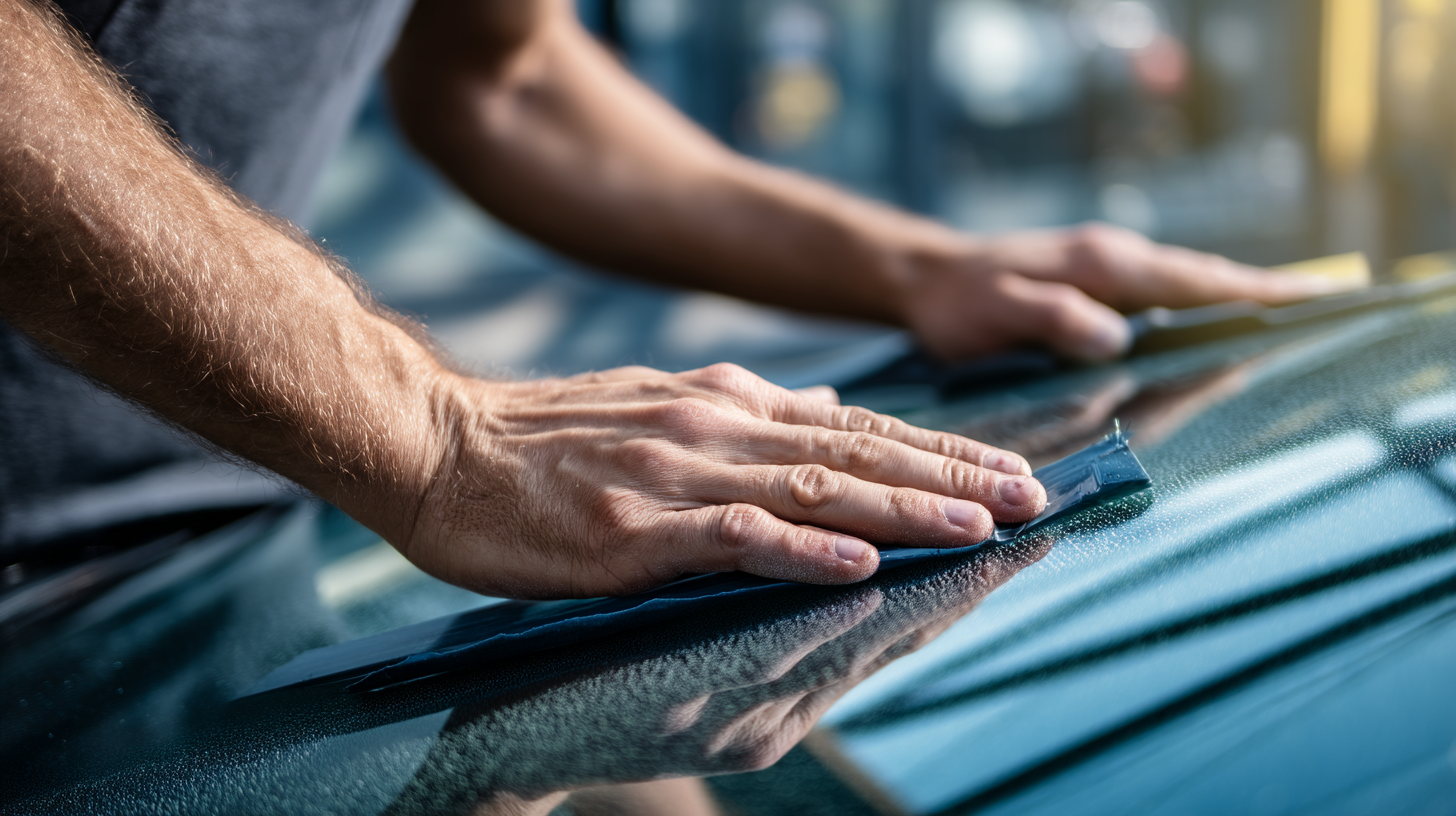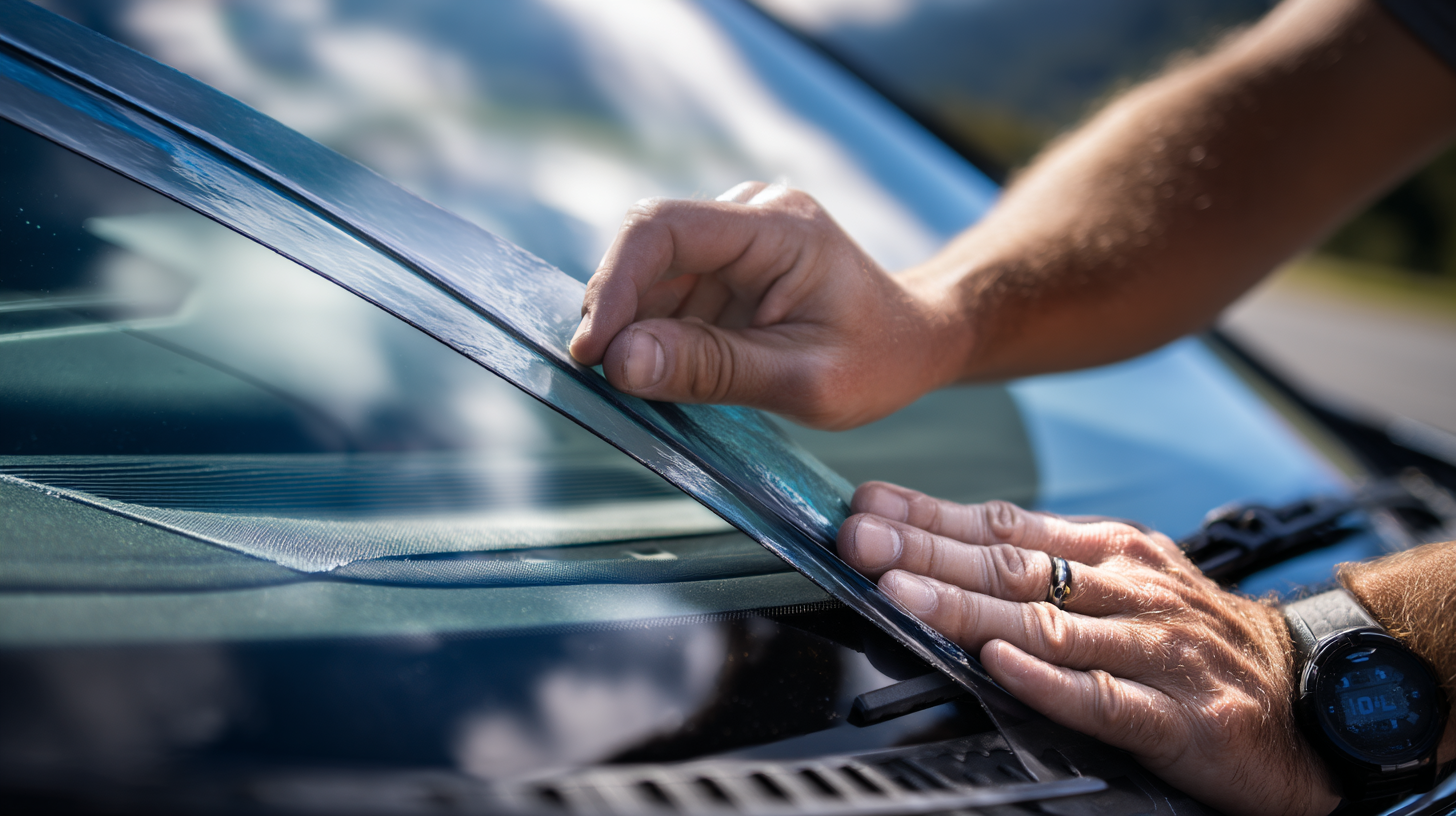
Understanding Windshield Replacement Costs
When you notice a cracked windshield or a spreading chip across your field of view, your first question is probably: how much should a replacement windshield cost? The answer isn’t as simple as it used to be. Modern cars are built with advanced safety features, specialized glass, and sensor technology that make today’s windshield replacement a precise and technical process. Understanding what influences windshield replacement costs can help you make the best decision for your safety and your budget.
What Is the Average Cost of a New Windshield?
In 2025, the average windshield replacement cost can range anywhere from $250 to $600 for standard models and up to $1,200 or more for vehicles with advanced safety features. Some luxury vehicles or cars that use specialized glass, heating elements, or rain sensors may see windshield replacement costs climb to $1,500 or beyond. These numbers vary widely because many factors affect the final replacement cost, including your vehicle’s make and model, the type of glass used, and local labor costs.
Why Prices Have Increased in Recent Years
Years ago, replacing a windshield was mostly about swapping out a piece of glass. Now, every new windshield is part of your vehicle’s safety structure. The glass supports the roof in a rollover, ensures airbags deploy correctly, and houses sensors for ADAS systems like lane departure warning and adaptive cruise control. These advanced safety features significantly impact the cost of windshield replacement because they often require camera recalibration after installation.
The Role of Technology in Windshield Costs
When you replace a windshield on a modern vehicle, the process goes beyond glass replacement. Many vehicles use specialized glass that integrates with cameras or sensors. Calibration is critical to ensure your car’s safety systems continue to perform as intended. This calibration step can add $300 to $600 to your windshield replacement cost, but skipping it can compromise your vehicle’s safety and lead to more expensive repair costs later on.
Factors That Influence Windshield Replacement Costs

Vehicle Make, Model, and Year
Your car’s make and model are among the biggest factors that influence windshield replacement costs. For example, replacing the windshield on a basic sedan without sensors may cost much less than doing the same job on a 2025 SUV equipped with rain sensors, a head-up display, and multiple cameras. Luxury vehicles typically have higher repair costs because they require OEM glass and precise installation procedures to maintain safety standards.
OEM Glass vs. Aftermarket Windshield Options
One decision that affects the final replacement cost is choosing between OEM glass (original equipment manufacturer) and an aftermarket windshield. OEM glass matches your vehicle’s specifications exactly, ensuring optimal clarity and proper ADAS function. While it can be more expensive, it preserves your vehicle’s warranty and safety integrity. Aftermarket glass may help you save money upfront, but it can sometimes result in visual distortion or calibration issues. Always confirm that any glass installed meets your car’s safety and performance standards.
Labor Costs and Location
Labor costs vary based on where you live and the type of auto glass service you choose. Certified technicians with advanced training in ADAS calibration will generally charge more, but that expertise ensures your new windshield is installed correctly. Shops that invest in the latest equipment and technology often provide higher quality service and more accurate results. While the price may vary based on location, a trustworthy repair center that follows OEM procedures is always worth it.
Insurance Coverage and Deductibles
Your insurance coverage plays a big role in determining what you pay out of pocket. Most comprehensive insurance policies cover windshield replacement and repair costs, minus your deductible. Some states, like Florida, Kentucky, and South Carolina, offer full glass coverage that allows you to replace your windshield without paying anything out of pocket. If you’re unsure about your policy, your insurance provider or insurance company can confirm whether your comprehensive coverage includes auto glass service or ADAS calibration. Filing an insurance claim for a damaged windshield can be straightforward, and many repair shops help manage that process for you.
How to Get the Most Accurate Estimate
Why Online Quotes May Not Reflect the True Price
When searching “how much does windshield replacement cost” online, you’ll find a wide range of numbers. While these estimates are helpful for comparison, they don’t account for all the details that affect real-world pricing. Your specific vehicle’s model year, sensor configuration, and calibration requirements can all significantly impact your final replacement cost. Getting an in-person estimate ensures accuracy and helps you avoid unexpected repair costs later.
What to Ask Before You Replace a Windshield
To protect your vehicle’s safety and your wallet, ask your shop these questions before approving any windshield repair or replacement:
- Are you using OEM or OEM-equivalent glass?
- Is ADAS calibration included in the estimate?
- Are your technicians certified for my make and model?
These questions ensure you’re working with professionals who value safety and precision.
What to Expect From a Quality Service Provider
At a professional auto glass service center, your estimate should include OEM-quality materials, proper installation, ADAS calibration, and warranty coverage. A reputable repair facility won’t just replace your windshield, they’ll verify that all safety systems function correctly and that your new windshield meets manufacturer standards. Choosing a certified team guarantees that your vehicle will be repaired the right way.
The Safety Side of Windshield Replacement

More Than Just a Piece of Glass
Your windshield is a structural component that protects you in a collision. It keeps the roof from collapsing and ensures airbags deploy properly. A poor-quality installation or cheap adhesive can weaken that structure, putting you at risk. Proper bonding, curing, and calibration are essential to maintaining your vehicle’s safety after a replacement.
Common Mistakes That Compromise Safety
Some repair shops try to cut corners by skipping calibrations, using low-quality adhesives, or installing glass that isn’t made to OEM standards. These shortcuts can lead to leaks, wind noise, or even safety system malfunctions. Always choose a shop that follows original equipment manufacturer procedures to ensure your windshield replacement meets factory specifications.
When to Repair Instead of Replace
Assessing the Damage
A small chip or minor crack doesn’t always require a full replacement. Windshield repairs can be a cost-effective way to save money if the damage is limited and not in the driver’s line of sight. However, if the crack is longer than six inches, extends to the edge, or spreads across multiple cracks, you’ll likely need a full replacement. Repairing a small chip early can prevent it from spreading and reduce future repair costs.
When Full Replacement Is Necessary
A full replacement is required when your windshield damage affects the area around sensors or when you have multiple cracks that block visibility. Large cracks that reach the edge of the glass weaken structural integrity and can’t be safely repaired. Knowing when to repair versus replace a windshield is important for maintaining your car’s safety and avoiding higher windshield repair costs down the line.
What Happens During the Replacement Process
Step-by-Step Overview
The replacement process starts with removing the damaged windshield carefully to avoid harming your car’s paint or trim. Next, technicians clean and prepare the bonding surface, then install the new windshield using high-quality adhesives. Once the adhesive cures, calibration and system testing begin. Calibration ensures that all cameras, rain sensors, and advanced safety features function properly. A final inspection verifies that your windshield is correctly aligned and sealed.
Drive-Away and Curing Time
Most windshield replacements take one to three hours, including calibration and curing. It’s important not to drive until the adhesive has set completely, as this ensures your vehicle’s safety structure is fully restored. Always follow your technician’s advice about safe drive-away times to prevent future problems.
Saving Money on Windshield Replacement
Using Your Insurance Wisely
If your car insurance includes comprehensive coverage or full glass coverage, you can often replace a windshield with little or no cost. Even with a deductible, using your insurance to cover the expense can help you save money on major repairs. Always check your policy details and talk to your insurance provider about what’s included before scheduling your repair.
Repair Before It Gets Worse
Addressing a small chip early is one of the easiest ways to save money. A chip can spread quickly due to temperature changes, moisture, or road debris. Repairing it promptly avoids a more expensive full replacement later.
Choosing the Right Auto Glass Service
Selecting a trusted auto glass service center can make a big difference in quality and price. While it might be tempting to go with the cheapest option, experienced technicians provide long-term value by ensuring your windshield replacement is done right. Proper installation prevents leaks, noise, and costly rework.
Understanding Insurance and Payment Options

Comprehensive Insurance and Deductibles
Comprehensive insurance typically covers windshield repair and replacement if the damage wasn’t caused by a collision. Depending on your deductible, you might pay a small portion of the cost. If you live in a state that mandates full glass coverage, your insurance company will cover 100% of the replacement cost. Be sure to verify your coverage details before scheduling your repair to avoid surprises.
Filing an Insurance Claim
Filing an insurance claim for windshield damage is usually simple. Most repair facilities can contact your insurance company directly to start the process. You’ll need your policy number, deductible information, and a description of the damage. Having this information ready can speed up the repair and get you back on the road quickly.
Out-of-Pocket Payment
If you’re paying out of pocket, ask your technician for a detailed breakdown of costs. This should include labor costs, materials, calibration, and warranty information. While you might pay more upfront at a certified facility, you’ll benefit from better workmanship and long-term safety.
Why Professional Installation Matters
Certified Technicians Make the Difference
Choosing experienced technicians ensures that your replacement process follows safety protocols and OEM standards. Certified professionals understand how every component of your windshield interacts with your car’s structure and advanced safety systems.
Mobile Service Convenience
Many repair centers now offer mobile service, allowing technicians to replace or repair your windshield at your home or office. This can save you time and help you get back on the road quickly while still ensuring quality workmanship.
The Value of Quality Service
A reputable auto glass service provider guarantees that your windshield is replaced using manufacturer-approved materials, precise installation techniques, and full calibration. Investing in quality service gives you peace of mind knowing your vehicle’s safety has not been compromised.
Frequently Asked Questions (FAQs)
How much does it cost to replace a windshield without insurance?
The cost to replace a windshield without insurance typically ranges from $250 to $600 for standard vehicles, but it can be higher for luxury cars or those with advanced safety features. Paying out of pocket means covering the full replacement cost, including labor and calibration fees.
Does liability insurance cover windshield replacement?
Liability insurance generally does not cover windshield replacement costs for your own vehicle. It primarily covers damage you cause to others. Windshield repair or replacement is usually covered under comprehensive insurance or full glass coverage policies.
Can I save money by choosing an aftermarket windshield instead of OEM glass?
Yes, aftermarket windshields often cost less than OEM glass and can help reduce your replacement cost. However, OEM glass is designed specifically for your vehicle to ensure proper fit, clarity, and calibration of advanced safety features, so choosing aftermarket glass may affect performance or warranty.
How long does the windshield replacement process take?
Windshield replacement usually takes between one to three hours, including removal, installation, adhesive curing, and calibration of sensors. It’s important to avoid driving until the adhesive has fully cured to maintain your vehicle’s safety and structural integrity.
Conclusion
So, how much does windshield replacement cost in 2025? The answer depends on several factors including your car’s model, technology, and insurance coverage. On average, you can expect to pay between $250 and $1,500 depending on whether you need OEM glass, calibration, or specialized materials. While that may seem high, remember that your windshield is a key part of your vehicle’s safety. Getting it replaced by certified professionals ensures your advanced safety features continue to function as designed. Whether you need a quick windshield repair for a small chip or a full replacement after major damage, investing in quality service protects you, your passengers, and your vehicle. Don’t wait until a small crack becomes a costly repair, schedule your auto glass service today, and drive confidently knowing your car is repaired right the first time.




